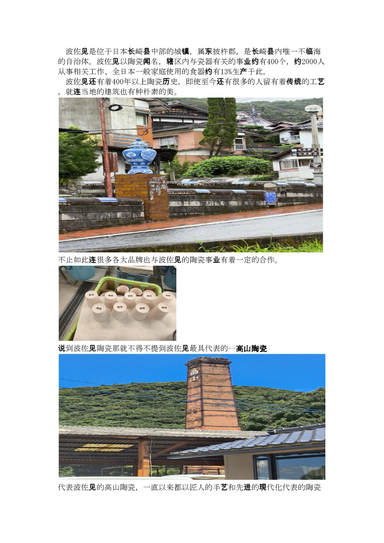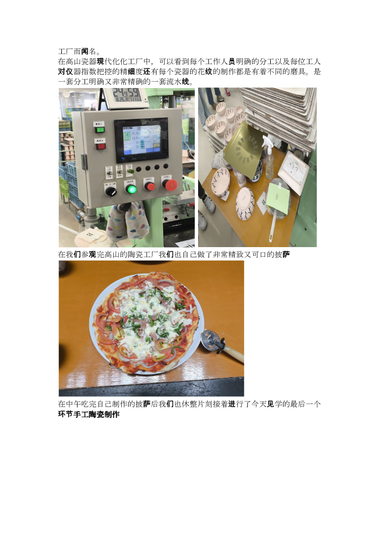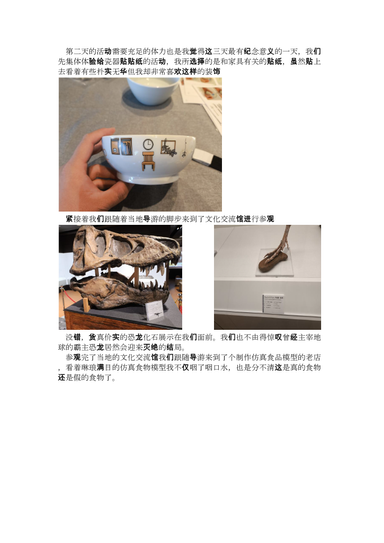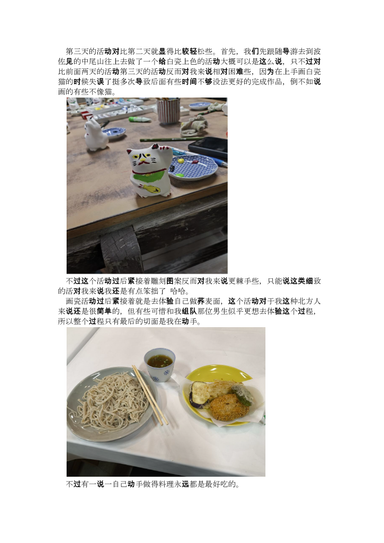This site is available in multiple languages. Please select your preferred language from the bar at the bottom right.
Craft Kyushu | A report from an international student living in Kyushu about the real experiences and excitement of traditional crafts

CHEN YUXIN
Visit to Hasami Town
(Report ①) Hasami is a town located in the central part of Nagasaki Prefecture, Japan. It belongs to Higashisonogi District and is the only municipality in Nagasaki Prefecture that does not face the sea. Hasami is famous for ceramics, and there are about 400 ceramic-related businesses in the town, with about 2,000 people working in related jobs. About 13% of the tableware used in ordinary households throughout Japan is produced here.

Hasami has a history of pottery that goes back more than 400 years, and even today many people continue to preserve traditional techniques. The local buildings also exude a simple beauty.

In addition, many famous brands also have cooperative relationships with Hasami's ceramics industry.

The most representative ceramics from Hasami are Takayama Pottery, known for combining artisanal skills with cutting-edge modern factories.
Known for its craftsmanship and modern technology, Takayama Pottery's modern factory has clearly defined roles for all staff, and each worker can be seen carefully managing the machine's parameters. Each pattern on the pottery is created using a different mold, making for a very precise and organized production line.
After visiting a pottery factory in Takayama, we made our own beautiful and delicious pizzas with our own hands.

。After eating homemade pizza for lunch, we took a short break and then moved on to the final program of the day's tour: making handmade pottery. At first, we wanted to make a tea bowl, but it was our first attempt and we weren't sure how hard to apply pressure. If you're interested in pottery culture, please come and experience it for yourself. Hasami Town in Nagasaki always welcomes your visit.
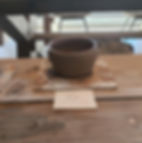
(Report 2) The activities on the second day required a lot of physical strength, and for me, it was the most memorable day of the three days. First, we all had the experience of sticking stickers on pottery. I chose a sticker with a furniture-related design. At first glance, it looked simple and plain, but I really liked this type of decoration.

Soon we were shown around the Cultural Exchange Center by our local guide.


Yes, real dinosaur fossils were on display right in front of us. We were astonished at the fact that the dinosaurs that once ruled the Earth had become extinct. After a tour of the local cultural exchange center, our guide and I visited a traditional food replica shop. The food replicas lined up in a cramped space were so realistic that we almost drooled, and it was hard to tell whether they were real food or fake.

Seeing so many realistic food replicas, I'm sure you all had the same feeling as me (laughs). Of course, we didn't just look around, we got to work and tried our hand at making a mini-sized parfait food replica. It's often said that "the happiest thing for someone who loves to eat is to make the most beautiful food themselves" (of course, we couldn't eat it this time ┭┮﹏┭┮).
Now, the parfaits that everyone made were filled with their own individual personalities and ingenuity.

My favorite was a fruit parfait full of local flavor made by a classmate from Sri Lanka.

After the activities, it was time for lunch. Since the morning's activities had used up a lot of energy, the lunch had a good balance of meat and vegetables, which helped to replenish the energy we had lost.

After lunch we had a short break and soon the last, and for me the most unforgettable experience of the day began.
It's a "treasure hunt in the river." In Hasami's rivers, you can find valuable pottery fragments that are over 100 years old. According to a local guide, in the old days, unfired pottery was disposed of by burying it in the ground, but over time, these fragments sometimes wash down from the mountains into the river.
The reason why this activity left the most impression on me was because a local appraiser appraised the pottery fragments we picked up on the spot and explained in detail what era they were from. Some participants found fragments from very old times. I also found a few, and I was very happy to pick up a special fragment on the way home.

Yes, the shards look like horses and yes, they look like dogs. Finally, when it came time to make a pendant using the shards of pottery, I chose it without hesitation.

Even though I don't know what era it is from, it is one of a kind to me and is the most precious treasure I have gained at the end of today's activities.
(Report 3) The activities on the third day were relatively relaxed compared to the second day. First, we went to a place on top of Nakaoyama in Hasami with our guide and experienced coloring white porcelain. That's roughly what it was like, but compared to the activities on the previous two days, the third day was actually more difficult for me.
This is because I made many mistakes when painting the white porcelain cat, and as a result, I didn't have enough time in the latter half of the project and couldn't finish it properly. To be honest, it didn't look like a cat at all.

However, the sculpting work that followed after this activity was even more difficult for me. I guess I'm a bit clumsy when it comes to this kind of detailed work, so to be honest, I had a hard time with it (laughs).
After the activity of painting pottery, we also had the experience of making soba noodles by ourselves. It was a relatively easy activity for someone from the north like me, but unfortunately the boy in my group seemed more interested in the process, and the only part where I actually got to use my hands was cutting the noodles.

But food you make yourself is always the most delicious, isn't it? After lunch, we took a short break to prepare for our final activity at the Takayama Porcelain Factory, where we summarised our activities over the three days. The photo that left the biggest impression on me was the one of the ceramic fragments of a decapitated animal. It was very meaningful to me. The most difficult part of these three days was colouring today's white porcelain cat. I didn't really know how to use the brushes, and I was a bit concerned about the colour going over the edges.
The thing I want to ask most is about the concerns about future craftsmen passing on their skills. I am worried that if the techniques of Hasami, a ceramics industry with hundreds of years of history, are only carried on by a few people, it may disappear in the future. Of course, I am sure there will be people who will carry on this technique. Through the three-day training in Hasami, I learned a lot and my interest in ceramics has increased greatly.
Report
Report language :
Chinese (Simplified)




